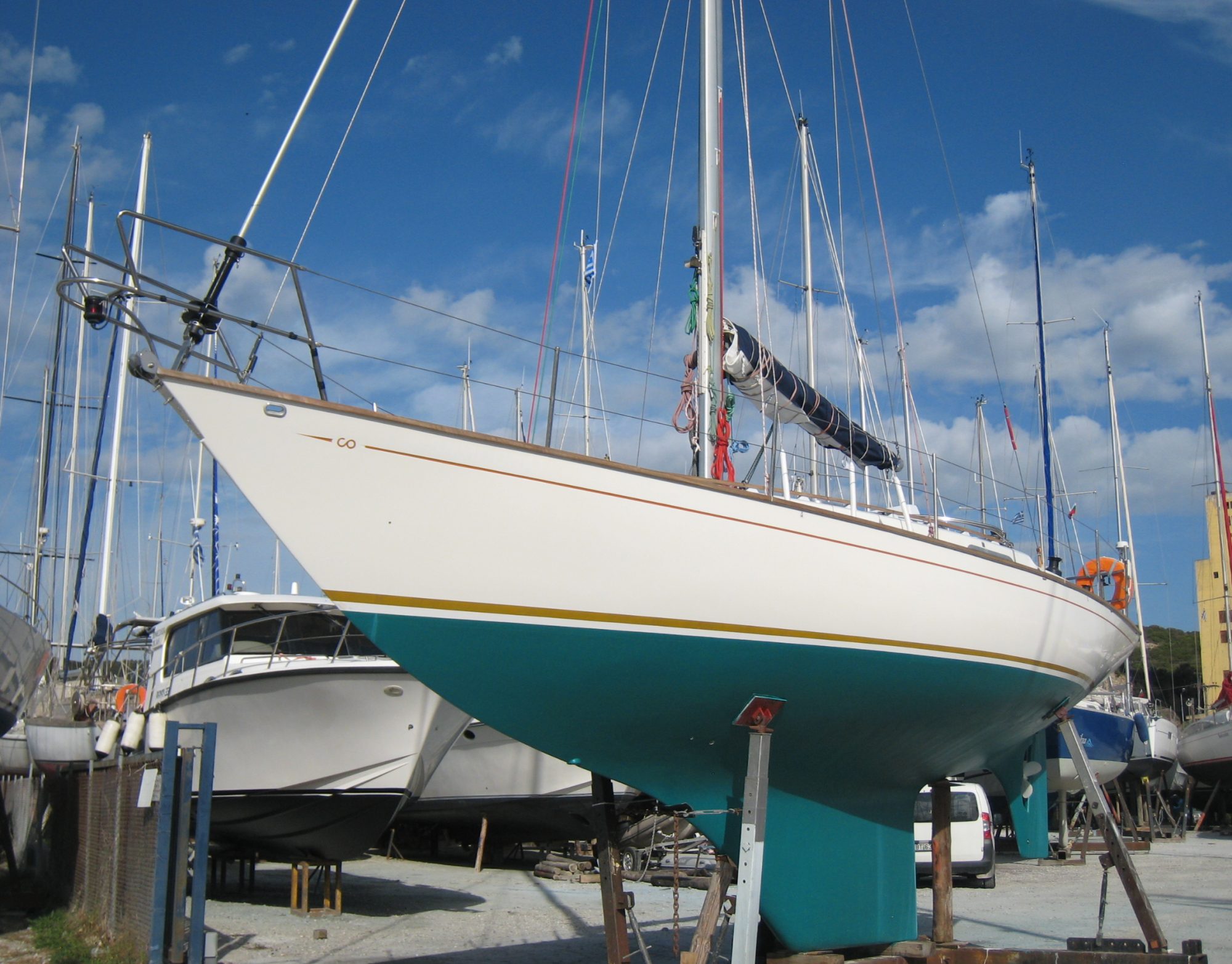VARNISHING THE BULKHEADS- UPHOLSTERY- INSULATING THE INTERIOR
The month began with a very nice weather, allowing us to finish some small jobs on the hull. It was still necessary to cover the outside of the boat with plastic sheating in order to maintain a good average temperature.

We also completed the epoxy treatment on the patches that were left after the boat was moved.


The screws around the seacocks had to be covered with Watertite filler and epoxy paint.


Working under the plastic cover was great ! We used a couple of air blowers to heat up the hull and make sure the epoxy will cure properly.

At the same time, next to us there was another kind of boat repair taking place. We admired the ancestral technique of George the boat carpenter. Alone, he totally rebuild the bow and steam of this Greek Kaiki which had crashed on the dock. For only tools: an electrical plane, a hammer and a hand saw…that is all he needed to rebuild the Kaiki !



After completing the woodwork, George did all the caulking as it is usually done on wooden boats. A marvelous job implying a lot of dexterity and knowledge !

On our side, we were preparing the bulkheads for varnishing. A few last spots had to be filled and sanded again just before applying the first coats of Epifanes Clear varnish. In between the coats we sanded with fine grain paper, grade 320.


For the final coat we used Epifanes Rubbed Effect which is fast drying and gives a nice mat result.


The cushions were finally ready. We chose an aqua marine color and an outdoor material ideal for boats which is waterproof and stainproof.

We decided to insulate most of the boat and especially the ceiling of the front cabin. This measure will hopefully help to avoid condensation inside the boat which can be very unpleasant.

But before installing the insulation sheets, we had to glue some wood pads on the ceiling. On those pads we will screw on the final plywood boards covering the insulation.

Gluing those wood pads was another “artistic installation”. Each little pad had to be hold in place with wood sticks, ingenuity and a lot of patience.



Two days before Christmas was a really cold day….but who cares when the Greek sun is shining over your head.

The wild neighbouring mountains were already covered with snow.

Christmas Eve was spent into the boat covering the inside with insulation. For this purpose we used a polyethylene closed cell foam of 15mm. This is often used to insulate aluminium boats. It is quite cheap and very easy to work with. A simple Stanley knife and a tape measure are all the tools required for this job.


Most of this polyethylene sheets were hold in place just by squeezing them in between the furnitures.


The ceiling of the forepeak was more tricky. There we had to glue the insulation sheets with some neoprene glue which smells like hell but holds very well. We used a local greek neoprene glue called R-888 which is often used in car tapestry. This glue is suppose to be resistant to high temperatures.

Full mask protection was compulsory to avoid “getting high” on R-888 !

This is the front cabin ceiling finally insulated.

The last step was to cut some thin plywood boards to cover the insulation.

There we are ! The plywood boards covering everything. These boards will later be painted over with alkyd enamel.

On another sunny afternoon, we fixed on deck the stainless frames for the new sprayhood.

To find out the exact position of the base fitting for the frames, we had to bring the new Spinloch Clutches to check the distances.

Then we drilled through deck and used a hole saw 21mm under deck to fit proper machine screws with large washers.

After several tests, we finally fitted on the frames with marine sealant.


The next day, the uphosterly man came on board to do a template for the sprayhood.

Full moon was approaching and the weather was still amazing !

New Year’s Eve still working late on the insulation. In the chart table area we had to create a new locker for the electrical panels. The ceiling of this new cupboard had also to be fully protected by polyethylene sheets.




Appreciate it for all your efforts that you have put in this. very interesting information.
LikeLiked by 1 person
I was able to find good advice from your blog posts.
LikeLiked by 1 person